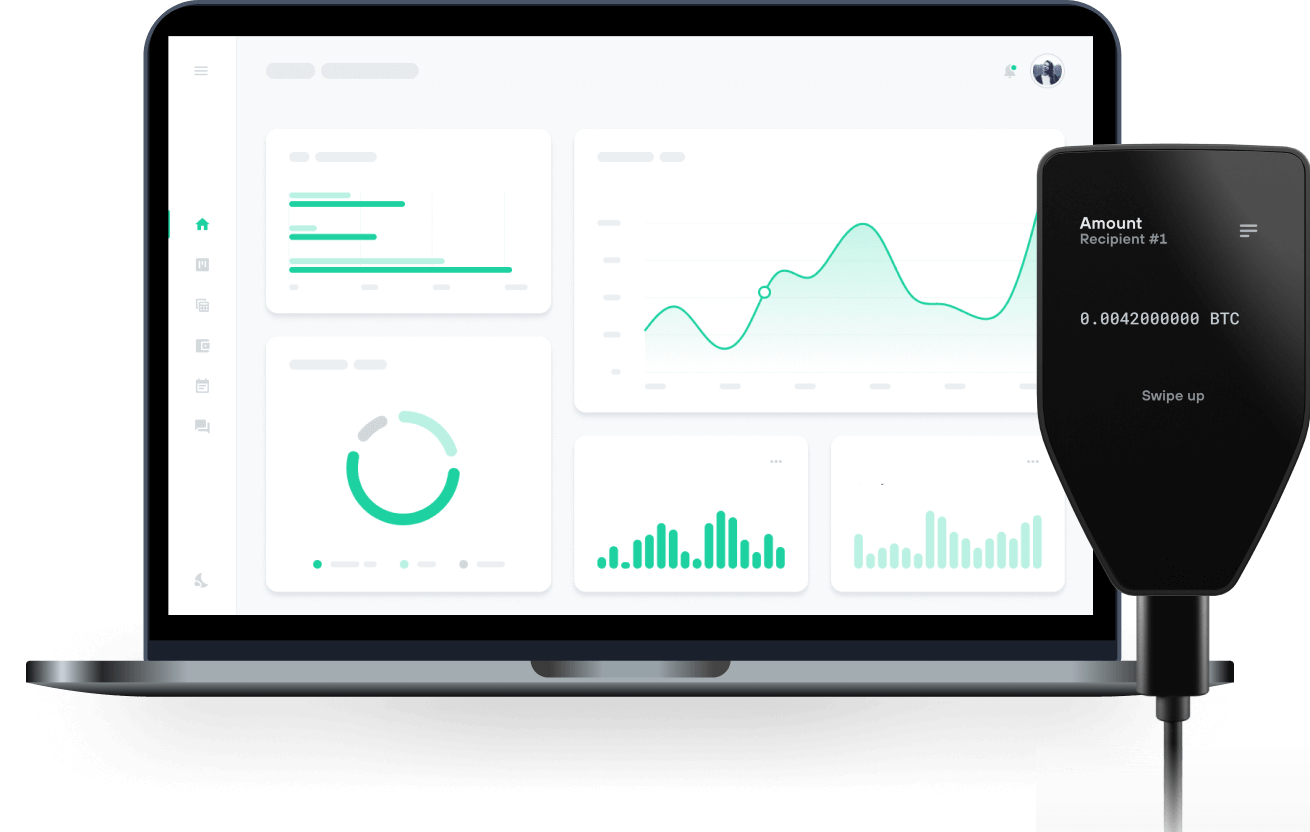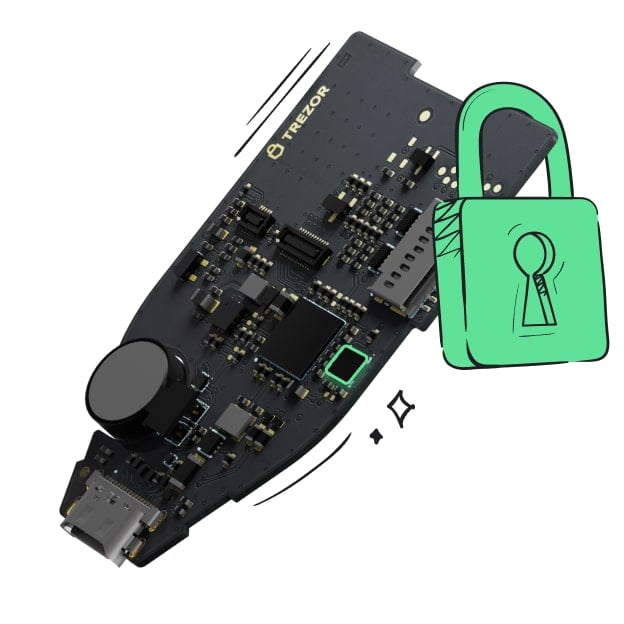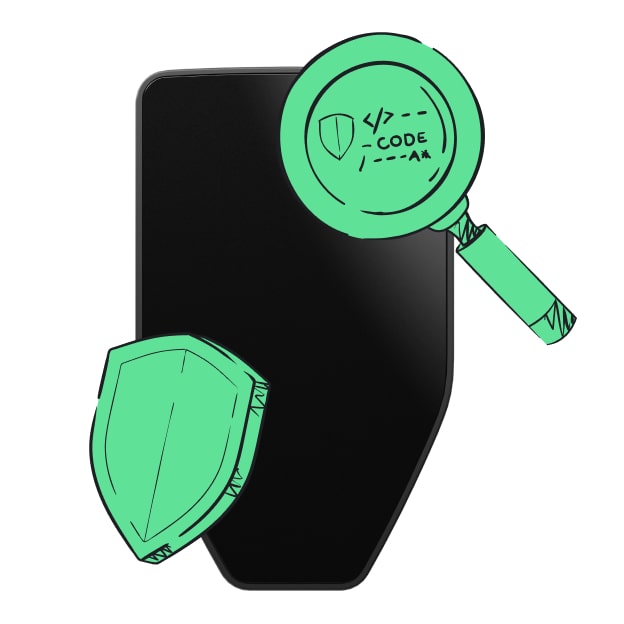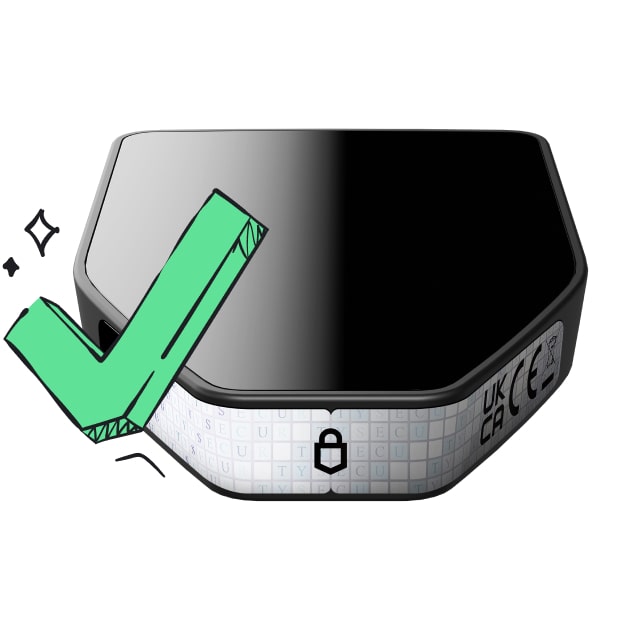Safe & secure Namecoin wallet
Use the security of your Trezor hardware wallet to safely manage your Namecoin.
- Secured by your hardware wallet
- Trusted by over 2 million customers

Send & receive your Namecoin with Trezor Hardware wallets

Send & receive
Trezor hardware wallets that support Namecoin
Supported Namecoin Network
- Namecoin
Why a hardware wallet?
Go offline with Trezor
- You own 100% of your coins
- Your wallet is 100% safe offline
- Your data is 100% anonymous
- Your coins aren’t tied to any company
Online exchanges
- If an exchange fails, you lose your coins
- Exchanges are targets for hackers
- Your personal data may be exposed
- You don’t truly own your coins
How to NMC on Trezor
Connect your Trezor
Open a third-party wallet app
Manage your assets
Make the most of your NMC
Trezor keeps your NMC secure
 Protected by Secure Element
Protected by Secure ElementThe best defense against both online and offline threats
 Your tokens, your control
Your tokens, your controlAbsolute control of every transaction with on-device confirmation
 Security starts with open-source
Security starts with open-sourceTransparent wallet design makes your Trezor better and safer
 Clear & simple wallet backup
Clear & simple wallet backupRecover access to your digital assets with a new backup standard
 Confidence from day one
Confidence from day onePackaging & device security seals protect your Trezor’s integrity
Namecoin is a domain name registry service and was the first coin to fork Bitcoin. Similar to registering a .com or .io domain name, you register a .bit domain on the network. This domain is censorship-resistant and impervious to activity tracking. Governments and large corporations control traditional domain name services (DNS) servers. This control is how the Chinese government, for instance, can block websites that go against their beliefs. To prevent this level of censorship, Namecoin uses blockchain technology to distribute its DNS amongst the users on the network.
A pseudo-anonymous founder by the name of “Vince” created Namecoin in 2011. Since then, Vince has disappeared, but a core development team has kept the project alive. The project has several developers listed on the official website and benefits from the contributions of numerous anonymous developers as well. Namecoin has been fully functional for a few years, now, and the development team posts updates several times a month.
Namecoin was the first cryptocurrency to use Auxiliary Proof of Work (AuxPoW) for its consensus. By using AuxPow, Namecoin and Bitcoin can be mined simultaneously. In this consensus, the child blockchain depends on the proof-of-work of parent blockchain, which means If a new block is created on Bitcoin blockchain, it will also be added to the Namecoin blockchain. NameID is another technology brought by Namecoin. It serves as an open service for securely registering human-readable names in a decentralized way. NameID is a combination between Namecoin and OpenId, where users can easily convert their Namecoin Identities into OpenIDs. This makes NameID a solution to Zooko's triangle, which states that there are three desirable properties (Human-meaningful, Decentralized, and Secure) for name participants in a network protocol and any participant can only inherit two properties at a given time.
Namecoin is among some earliest cryptocurrencies. During its existence in the market, it has seen a high volatility on some occasions, which can be attributed to many reasons. Namecoin has been around in the cryptocurrency market much longer than most cryptocurrencies today; however, despite this, it has not gotten much attention until recently. In 2014, it was among the top ten cryptocurrencies by market capitalisation, which is now changed due to the introduction of hundreds of new cryptocurrencies. Namecoin was abandoned by its creator which can be seen as a red flag by many. The project is currently being developed with the support from its community. The current team has been actively taking the project forward and also provides regular updates on social media channels.
Communities
Frequently asked questions
Yes, Namecoin is considered the first altcoin, created in April 2011. It was developed as a decentralized domain name system (DNS) to enable users to register .bit domain names, which are resistant to censorship. Namecoin was built on the Bitcoin protocol, meaning it shares many of the same underlying principles and technology, but it was designed to serve a different purpose than Bitcoin, making it the first alternative cryptocurrency to emerge.
The Namecoin supply is limited to 21 million.
As with all cryptocurrencies, you should practice self-custody and take ownership of all your digital assets, including Namecoin. Once you have purchased Namecoin via a reputable cryptocurrency exchange, protect your funds by moving them to your Trezor hardware wallet.
Yes, you can mine Namecoin if you’d rather not purchase it from a cryptocurrency exchange. We recommend reading the Namecoin documentation on mining if you wish to do so.
A Namecoin wallet is a digital tool for storing, sending, and receiving Namecoin (NMC), which is a cryptocurrency used as a decentralized domain name system (DNS). Basically, it keeps your private keys safe, which you need to manage your Namecoin funds.
If you have a Trezor hardware wallet, like the Trezor Safe 3 or Trezor Safe 5, you're in luck! These devices let you manage your Namecoin securely. They store your private keys offline, which means you're protected from online threats and hacks. To interact with your Namecoin, you can use the Trezor Suite app. It makes it super easy to access and manage your Namecoin while keeping everything safe and sound. With Trezor, you get the convenience of a simple interface and the peace of mind that your funds are well-protected.
Note: as of February 2025, Namecoin will no longer be supported in Trezor Suite. Please transfer your funds before this change takes effect.
The total supply of Namecoin is capped at 21 million coins, similar to Bitcoin. As of now, about 14 million Namecoin have been mined, with the remaining coins to be mined over time as new blocks are added to the blockchain. The mining process slows down over time, which means that while there is a maximum limit, the exact number of Namecoin in circulation will gradually increase until it reaches the cap.